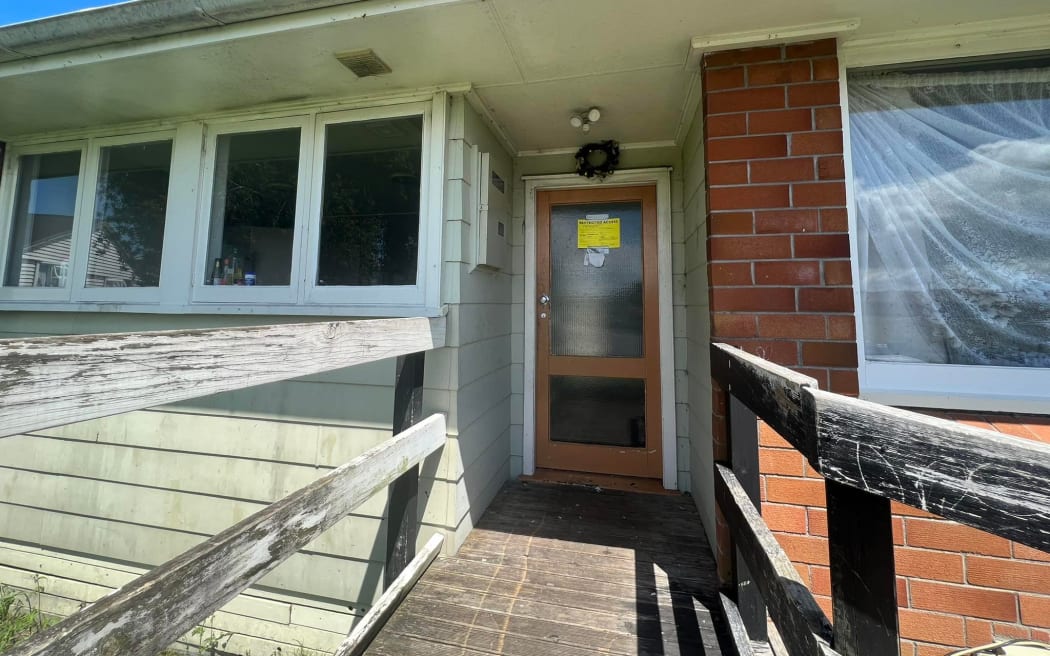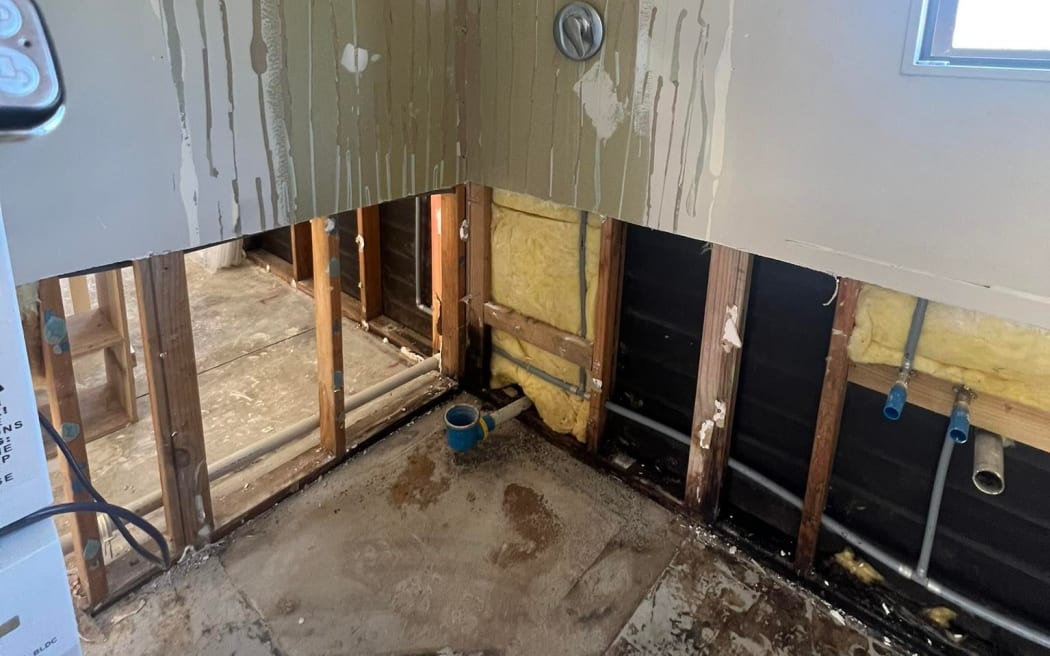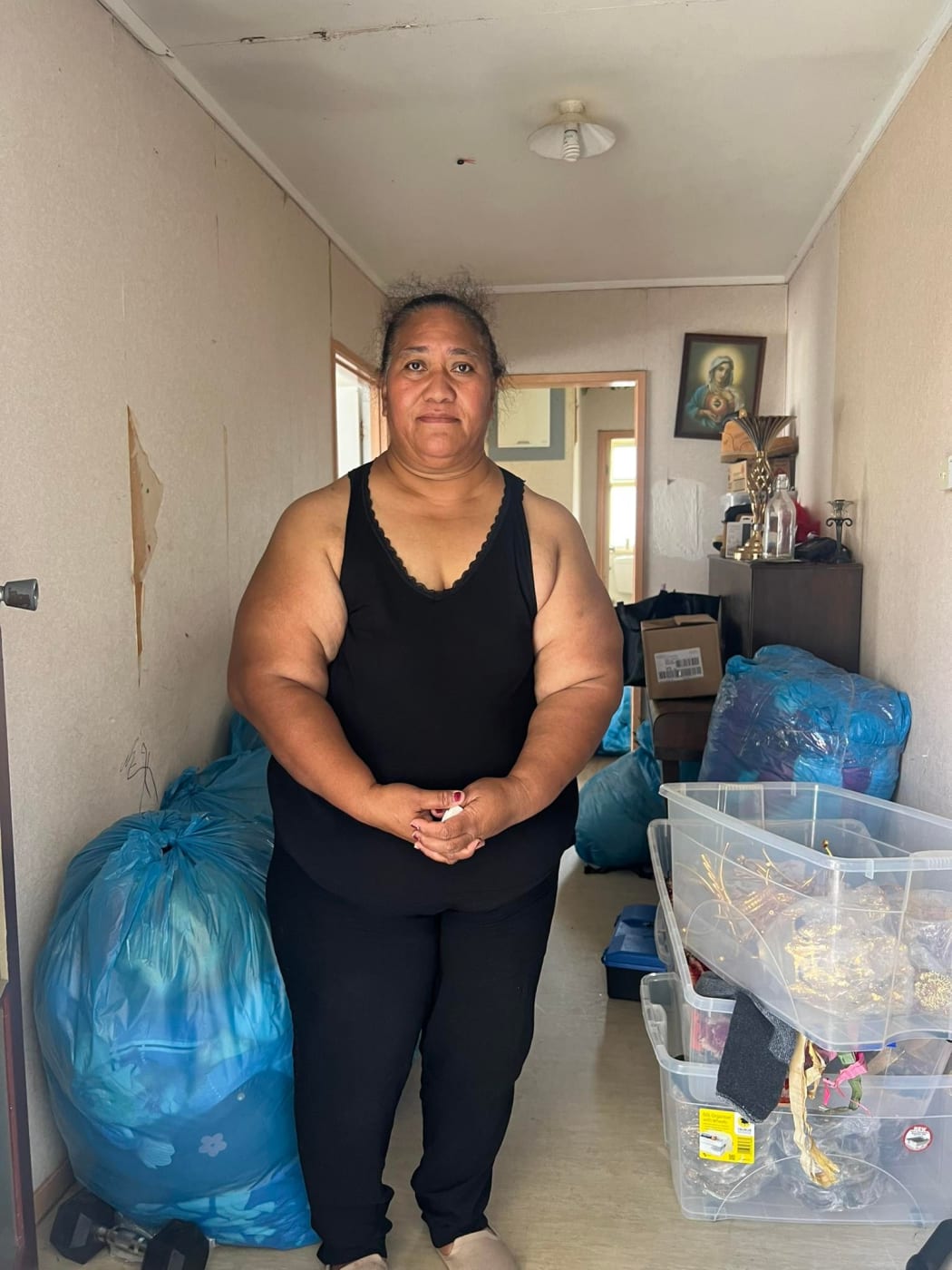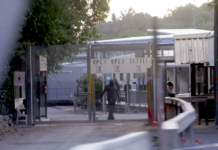
By Susana Suisuiki, RNZ Pacific journalist
Long-time residents in a street in Māngere, Auckland, say they never imagined that one day they would have to row their way out of their street to safety.
One resident, Mesalina, said they were left in the dark when the power failed and the situation hit home when she saw her neighbour sailing past on a boat.
“The lights went off around ten o’clock night time,” she said.
- LISTEN TO RNZ PACIFIC WAVES: Following the Auckland anniversary floods
- Other Auckland floods reports
“I opened the window and said, ‘can you help?’ — I didn’t believe that the water had come inside.”
A month on since the Auckland anniversary weekend floods, Mesalina and her daughter Nancy are now staying at a motel, but Nancy said there is “no place like home”.
“She’s just really bugging me about really wanting to go back home,” Mesalina said.
“She’s kind of homesick; we just don’t like the motel because it’s something new.”
Te Ararata Creek overflowed
On that Friday night, the heavy rainfall caused Te Ararata Creek to overflow, seeping into the surrounding homes around Bede Place and submerging vehicles that lined the street.
Samoan community leader Paul Mark lives next door, but his house has been yellow stickered and flood-damaged items are strewn around the property.

Mark is staying with his sister in the nearby suburb of Manurewa but said the floods had uprooted his life.
“We’re trying to keep busy, like going back to work but we’ve got nowhere to go for home,” he said.
“We’re all scattered around, my parents are at a motel room and the kids have had to change schools.”
He said securing a new home was challenging as he had his parents’ needs to consider.
“We’re trying to find a place that’s accessible, that has a ramp and a walk-in shower for my mum who is a wheelchair user.”

House now a shell
Just minutes away is Caravelle Close, where Louisa Opetaia lived, but she said her house had become a shell.
Salvageable belongings are piled in the middle of each room but the bottom half of the walls have been taken out and the home is uninhabitable.
Louisa is staying at emergency accommodation in the city but said with meals not included, it’s becoming stressful.
“I don’t want to appear ungrateful but it’s just hard and there are families living in this hotel with us who have kids. They’re stuck in the city where there aren’t many places to eat except for fast food outlets and they can’t cook for their kids.”
While much of the country’s attention has turned to cyclone recovery efforts, the affected residents of Māngere say they’re still suffering.
“So there’s all these other kinds of struggles you know that are still continuing, even though it’s a month later — I mean the ground has dried up but the struggles that we’re going through still continue,” Louisa said.
Four weeks on from the flash flood that tore through their streets and turned their lives upside down, the residents of Bede Place and Caravelle Close are left wondering what the future holds for them.
Despite staying in warm and safe places for the time being, they know it’s not a long-term solution and that it won’t be a quick or easy mission rebuilding their lives.
This article is republished under a community partnership agreement with RNZ.














































